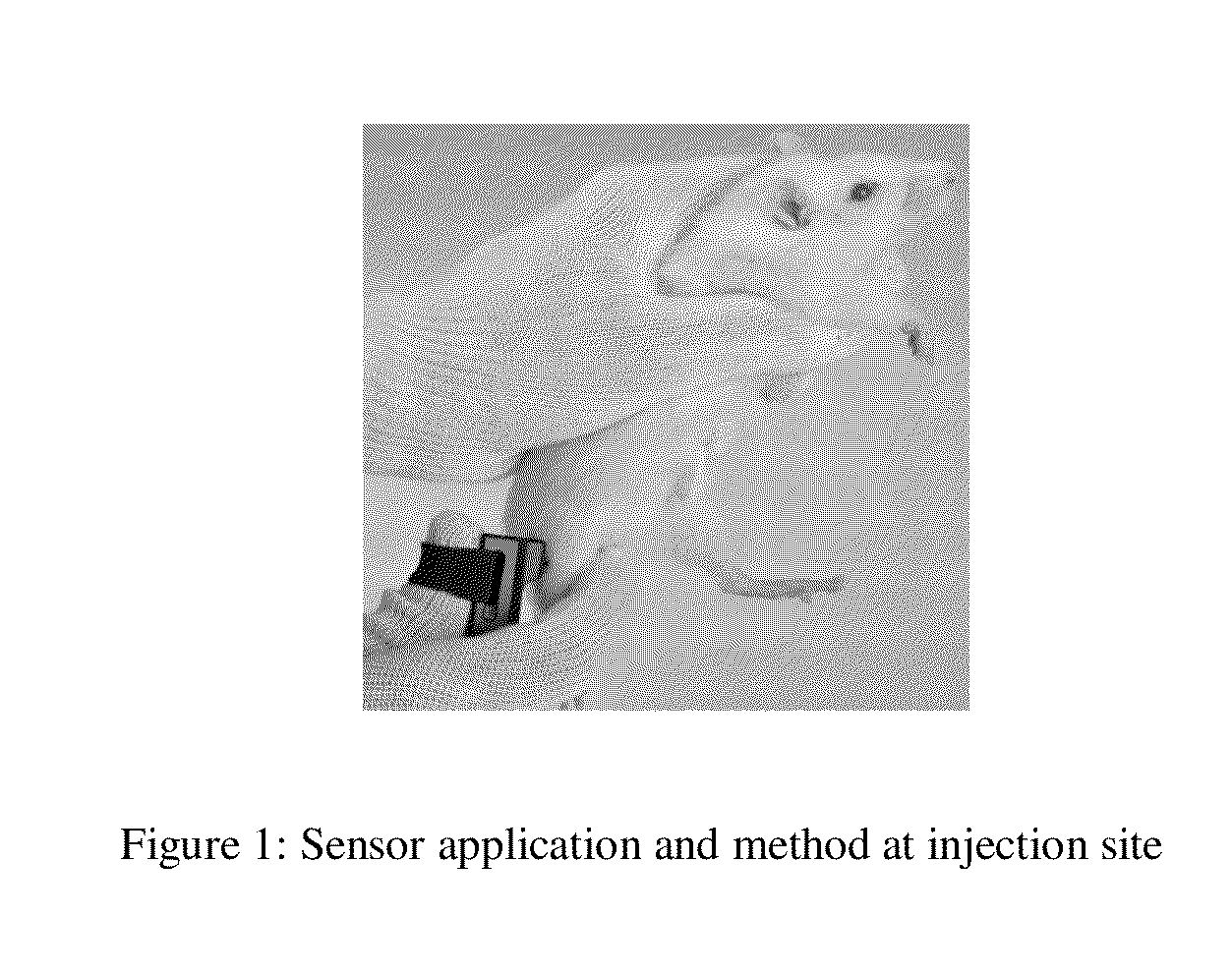Compositions of pharmaceutical actives containing diethylene glycol monoethyl ether or other alkyl derivatives
a technology of diethylene glycol monoethyl ether and other alkyl derivatives, which is applied in the direction of biocide, heterocyclic compound active ingredients, amide active ingredients, etc., to achieve the effects of less viscosity, less viscosity, and transparent and less viscosity
- Summary
- Abstract
- Description
- Claims
- Application Information
AI Technical Summary
Benefits of technology
Problems solved by technology
Method used
Image
Examples
example 2
Progesterone (I.1)
[0693]
Sr. NoIngredientsQuantity / ml1Progesterone100 mg2Benzyl Alcohol20%3Diethylene Glycol Monoethyl Etherq.s. up to 1 ml
[0694]The maximum solubility of Progesterone in Diethylene glycol monoethyl ether was found to between 0.1 to 50 mg / ml while its solubility in Benzyl alcohol was found up to 100 mg / ml. Progesterone is dissolved in solution of 20% Benzyl alcohol giving a clear solution and add Diethylene glycol monoethyl ether with constant stirring and make the volume up to 100 ml with Diethylene glycol monoethyl ether. The clear colourless liquid has viscosity of 3.86 cps. This solution is filled in 3 ml clear glass vial.
[0695]Similarly, 2 g to 12 g of drug is dissolved in 100 ml Diethylene glycol monoethyl ether to give a clear solution for use in therapeutic concentration as a parenteral form. The same may be filled in vial or ampoules, PFS.
[0696]Optionally, it can be mixed with preservative like benzyl alcohol in the range of about 2% to 4% for filling in mult...
example 3
Nandralone Decanoate (I.2A)
[0702]The solubility profile of Nandrolol decanoate with Diethylene glycol monoethylether is about 1 to 100 mg / ml.
Sr.No.Name of IngredientsQty / mlQty / mlQty / ml1Nandrolone100 mg25 mg 25 mgDecanoate2Benzyl Alcohol2%2%2%3BHA 1 mg 1 mg0.3 mg4BHT 1 mg 1 mg0.3 mg5Vitamin E Acetate 1 mg 1 mg 1 mg6Diethylene Glycolq.sq.sq.sMonoethyl Ether
[0703]Weigh accurately Nandrolone Decanoate under cool & dark place & take clean vessel. Add Diethylene glycol monoethyl ether into this and stir vigorously to dissolve Nandrolone Decanoate until a clear solution is obtained. Add BHA, BHT & Vit. E. acetate, stir vigorously to dissolve it in Diethylene glycol monoethyl ether.
[0704]Make up the volume up to 100 ml. using Diethylene glycol monoethyl ether. Solution is filtered by 0.45 micron filter 0.22μ& filled in 1 ml clear glass ampoules with nitrogen flushing & stability.
[0705]The resultant solution gives a concentration of Nandrolone Decanoate.
[0706]The stable solution of Nandrolo...
example 4
Testosterone Cypionate (I.3B)
[0714]The solubility of testosterone cypionate in Diethylene glycol monoethyl ether was found to be 50 mg / ml with viscosity less than 7 cps.
[0715]2.5 g to 5 g of drug is dissolved in 100 ml Diethylene glycol monoethyl ether to give a clear solution.
[0716]The stable injections are filled in ampoules or vials or PFS for ready use.
[0717]The final concentration can be given to the doctors after filling in ampoules and vials for it therapeutic application to the doctors, for the parenteral application.
[0718]The solution may be optionally filled in the desired concentration in caps for oral delivery or for preparing the composition for applying as gel.
[0719]The liquid may optionally have preservative like benzyl alcohol in concentration of about 2% to 6% antioxidants in butylated hydroxyl anisole or butylated hydroxy toluene may be added, which keeps the solution pellucid as well as physically and chemically stable.
PUM
| Property | Measurement | Unit |
|---|---|---|
| solubility | aaaaa | aaaaa |
| concentrations | aaaaa | aaaaa |
| concentrations | aaaaa | aaaaa |
Abstract
Description
Claims
Application Information
 Login to View More
Login to View More - R&D
- Intellectual Property
- Life Sciences
- Materials
- Tech Scout
- Unparalleled Data Quality
- Higher Quality Content
- 60% Fewer Hallucinations
Browse by: Latest US Patents, China's latest patents, Technical Efficacy Thesaurus, Application Domain, Technology Topic, Popular Technical Reports.
© 2025 PatSnap. All rights reserved.Legal|Privacy policy|Modern Slavery Act Transparency Statement|Sitemap|About US| Contact US: help@patsnap.com



